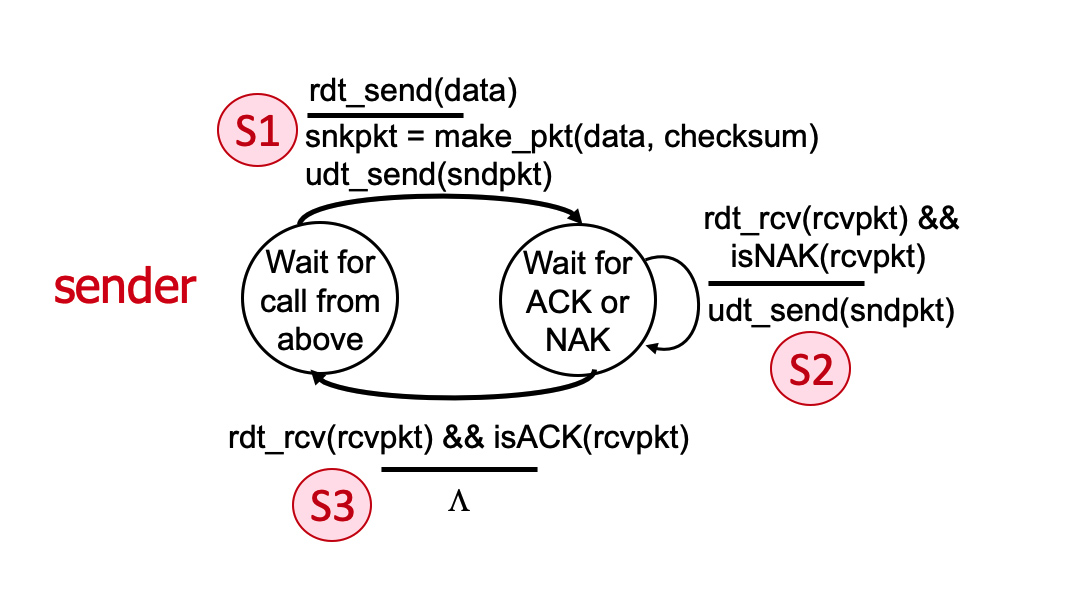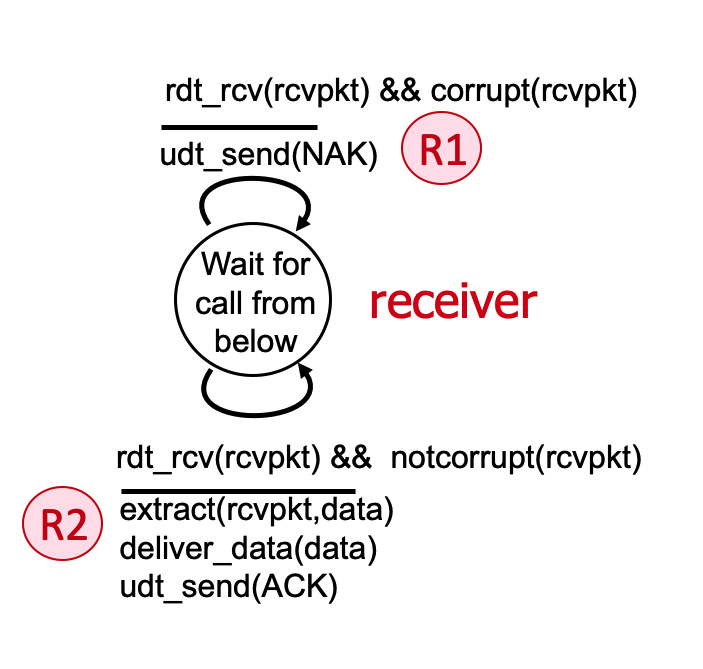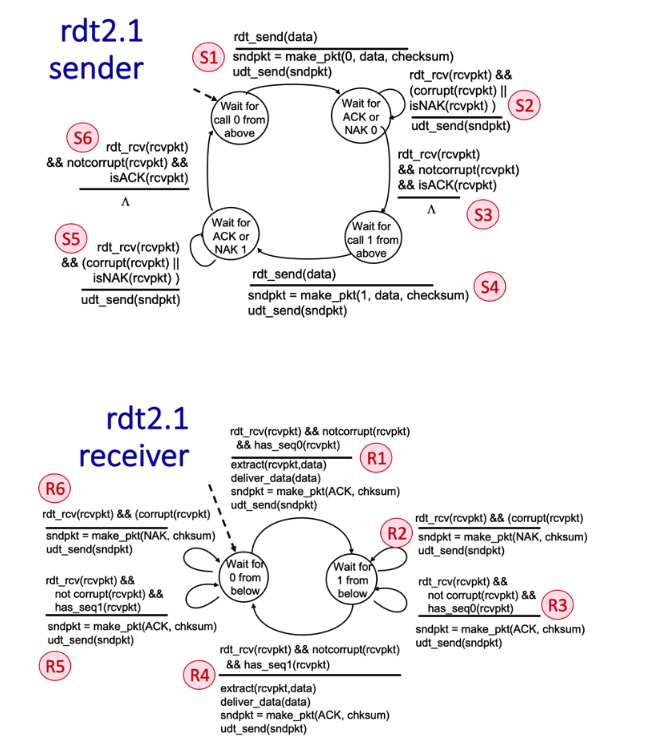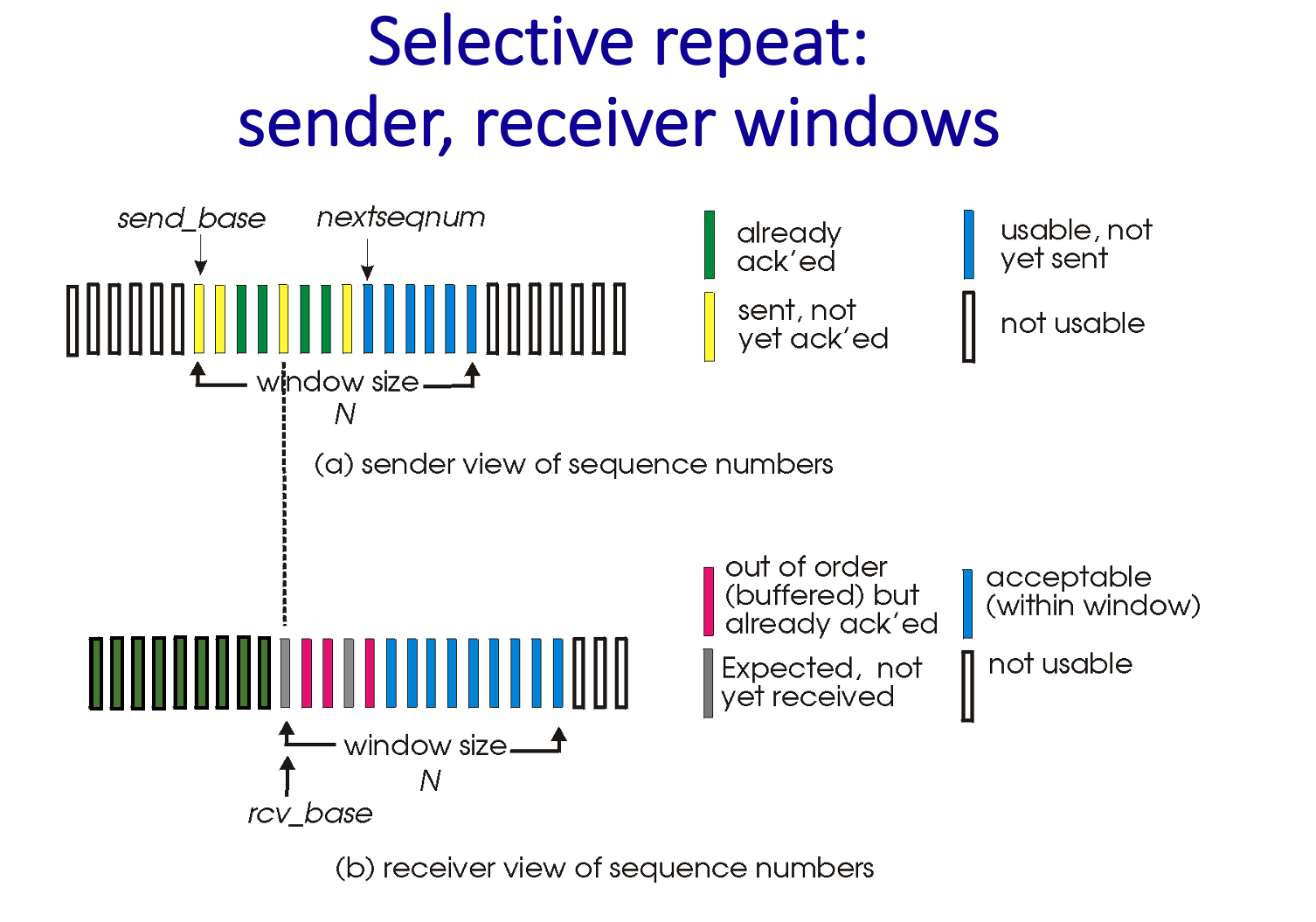Reliable data transfer protocol mechanisms.
The rdt 2.0 protocol.
Which of the following sequences of transitions could possibly occur as a result of an initial rdt_send() call at the sender, and possible later message corruption and subsequent error recovery.


The rdt 2.1 protocol (a).

Suppose that no channel errors occur. A sequence of interleaved sender and receiver transitions is given below. Transitions S1 and S4 are already provided. Choose the sender or receiver transition for the unlabeled transitions x1, x2, x3, and x4 below to indicate the time-ordered sequence of transitions (interleaved sender and receiver transitions) that will result in two messages being delivered at the receiver, with the sender and receiver returning to their initial states (again, given that no channel errors occur).
S1, x1, x2, S4, x3, x4
The rdt 2.1 protocol (b).

Suppose that the initial message transmission by the sender is corrupted, but that no other message transmissions are corrupted. Match the unlabeled transitions x1, x2, x3, x4, x5 in the time-ordered sequence of transitions below (interleaved sender and receiver transitions) that will occur following the initial S1 transition (which is corrupted), that will result in two messages being delivered at the receiver, with the sender and receiver returning to their initial states (again, given that the initial message transmission by the sender is corrupted). Note that transitions S1, S4, and S6 are already provided below.
S1 (message corrupted), x1, x2, x3, x4, S4, x5, S6.
The rdt 2.1 protocol (c).

Suppose that the first packet from the sender is correctly received at the receiver but that ACK message sent from receiver-to-sender is corrupted; all other messages (before or after that ACK) are transmitted error-free. Match the unlabeled transitions x1, x2, x3, x4, x5 in the time-ordered sequence of transitions below (interleaved sender and receiver transitions) that will occur following the initial S1 transition, which is followed by a corrupted ACK transmission, that will result in a message being delivered at the receiver, with the sender and receiver returning to their initial states. Note that some transitions are already provided below.
S1, x1 (ACK corrupted), x2, x3, x4, S4, x5, S6.
Cumulative ACK.
Stop-and-wait: channel utilization.
Channel utilization with pipelining.
Channel utilization with pipelining (more).
Pipelining.
Packet buffering in Go-Back-N.
Packet buffering in Go-Back-N (more).
Receiver operation in Selective Repeat.

Receiver operation in Selective Repeat (more).
